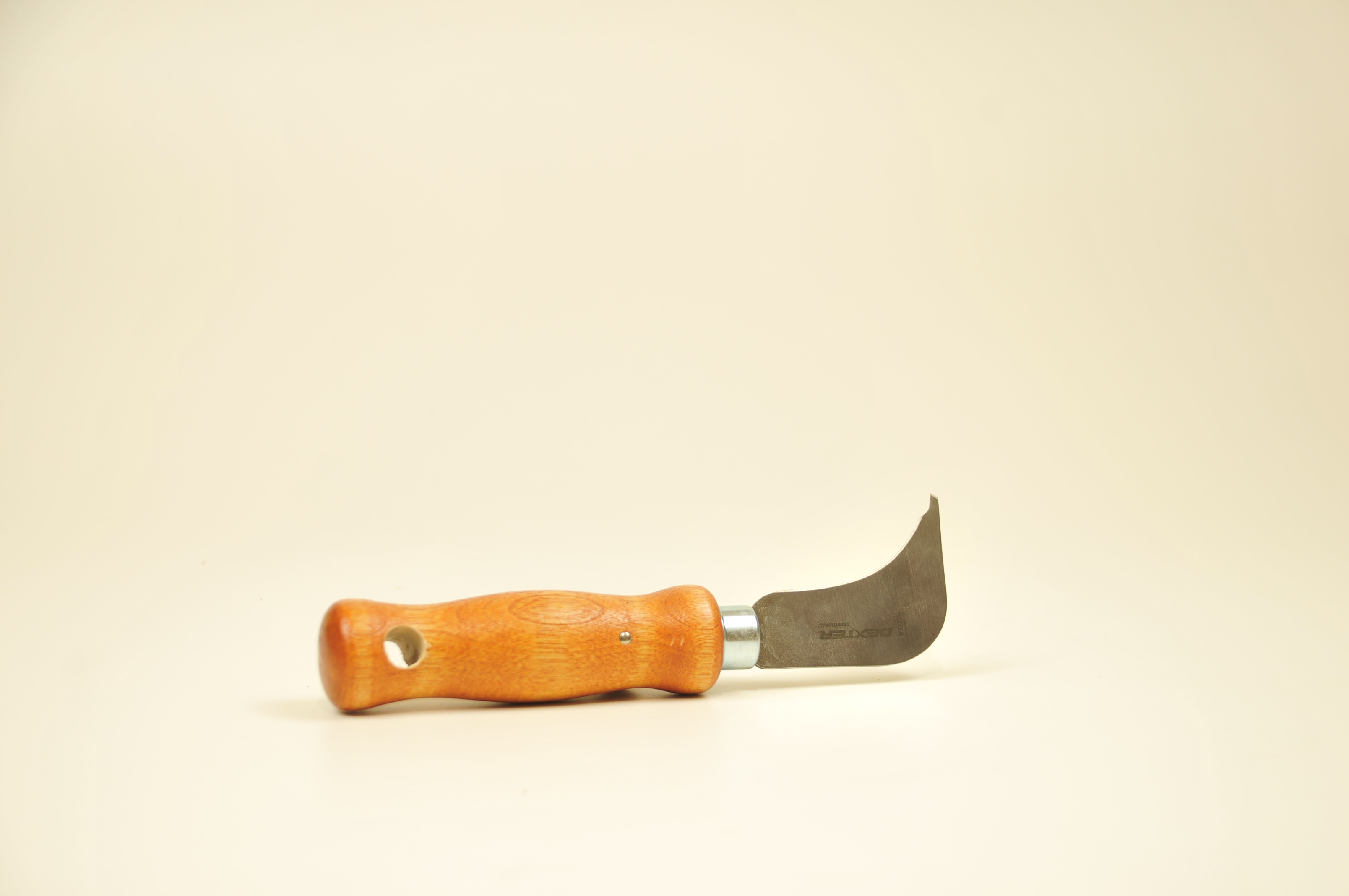

Many find using a curved blade helps make this type of cut. If you want the cuts to spread more slowly and create an “ear,” as is generally desired with long loaves ( baguettes and bâtards ), the knife blade should be held at a shallow angle with the surface of the loaf, at about 20-30 degrees or so. If you want the cuts to spread equally from the cut and to open quickly, as is traditional with round loaves ( boules), the knife should be held vertically – at 90 degrees to the surface of the loaf.īesides the “tic-tac-toe” pattern, boules can be scored with diamond patterns, simple crosses or much more elaborate and creative patterns. The angle the blade of the knife makes with the surface of the loaf is important in determining how the cut will open up. A wet, sticky dough requires a more shallow cut than one would make in a dryer dough. The cuts should generally be 1/4 to 1/2 inch deep.
#Scoring knife bread how to
(Tourist: “Please, sir, can you tell me how to get to Carnegie Hall?” New Yorker: “Practice, practice, practice.”)

In this respect, scoring bread is no different from an athletic skill or any other art or craft. Understanding the functions of scoring and the effects of the variables described can help, but there is no substitute for experience. For the beginner, it may help to take “practice swings” or to visualize the movements and totally focus one's attention before making the cuts. The scoring stroke should be firm, rapid, smooth and decisive. Curved lames are generally used for long breads like baguettes which are scored with cuts parallel to the long axis of the loaf. For other types of scoring, a curved blade works better. This sort of cut is generally used for round loaves (“boules”). Straight bladed knives are preferred for cuts made with the blade held perpendicular to the loaf's surface. Some bakers prefer serrated blades.įor some types of scoring, a straight blade is preferred. Scoring may be performed with other sharp, straight blades, even with a straight razor. ” ) This is simply a French word with means “blade.” Breads may be scored with straight or curved razor blades, either held in the hand or mounted on a handle. The blade used to score bread is often referred to as a lame ( pronounced “lahm. The effects of scoring on loaf shape are discussed in more detail below. While there are some very traditional patterns, for example for baguettes, the baker can use the scoring pattern to identify the type of bread or to create an unique pattern that identifies the loaf as coming from his or her oven. The pattern of cuts can create a pleasing visual pattern on the surface of the loaf. The pattern of cuts made, the angle at which they are made and the depth of the cuts influences the rate of expansion and the formation of an “ear” - a raised flap of crust at the edge of a cut.

The type of scoring performed controls the direction in which the bread will expand during “oven spring.” Intentionally creating a weak spot on the surface of the loaf prevents the loaf from bursting at weak spots created during shaping. French rye breads (pains de siegle) are sometimes scored right after shaping, before proofing. Scoring is generally performed just prior to loading the loaves in the oven.

However, almost all free-formed “hearth breads” are scored. For example many loaves baked in pans are not. “ Scoring” is the word used to describe the cuts made in a loaf of bread before it is baked.


 0 kommentar(er)
0 kommentar(er)
